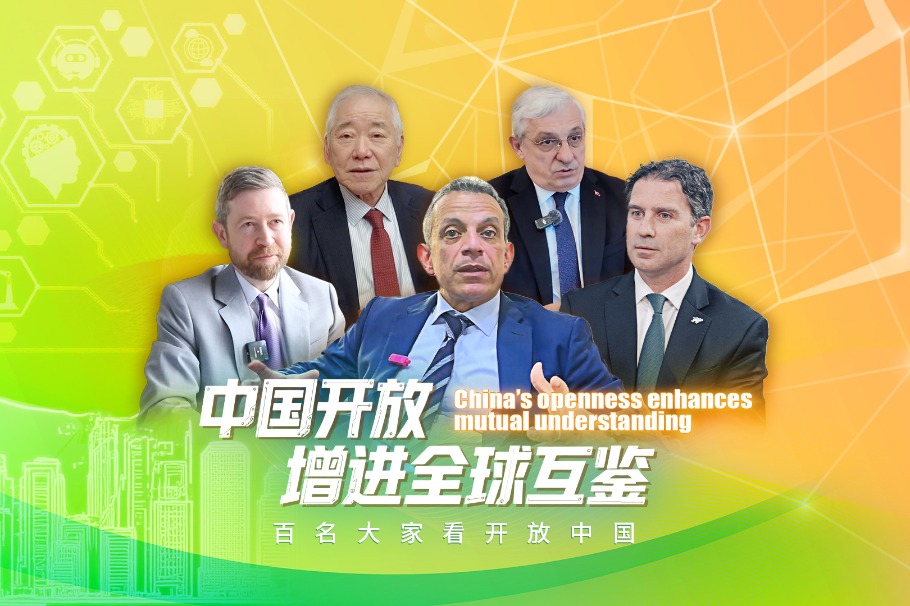Focused on heavy lifting for the world
By Zhong Nan | China Daily | Updated: 2020-04-27 10:46

DHHI's machinery keeps infrastructure in 92 economies in top shape
While many of the world's companies are seeking effective solutions to protect their growth path from the impact of the COVID-19 pandemic, Dalian Huarui Heavy Industry Group is more concerned about strengthening other businesses worldwide.
For instance, the State-owned enterprise, which is based in Northeast China's Liaoning province and listed on the Shenzhen Stock Exchange in southern Guangdong province, is now busy installing and testing four ship unloaders for a large-scale power station project in Jawa Tengah, Indonesia, run by Toyko-based J-Power/Electric Power Development Co Ltd.
Each ship unloader has a rated lifting capacity of 25 metric tons, and a coal unloading capacity of 700 tons per hour. All of the four unloaders are expected to be operational between June and July.
DHHI also delivered three giant container cranes to the Port of Gioia Tauro in southern Italy late last year. These 65-ton, 66-meter-long quay cranes are the first of their kind to be shipped by DHHI to a developed European country.
Supported by more than 10,000 employees and 16.48 billion yuan ($2.33 billion) worth of assets, the SOE has forayed into 92 countries and regions, including Australia, India, Japan and Russia. Its products now serve sectors like metallurgy, mining, ports, shipbuilding, energy and aerospace.
It has already established sales-and-service branches in Germany, India, Malaysia and Australia.
Cong Hong, chairman of DHHI, said the group will accelerate building sales networks and team up with local dealers. It will also handle tender and bid processes in more overseas projects, in particular countries and regions participating in the Belt and Road Initiative.
"Many of these opportunities come from these markets' growing demand for manufacturing, mining projects, transportation infrastructure like railways, port and shipbuilding, and the power station development businesses," Cong said.
He further said lack of infrastructure poses a bottleneck to economic development in BRI-related countries and regions.
The BRI has proved to be a strong force linking people and economies through cross-border solutions and supporting many regions to achieve social prosperity, he said.
One of the initiative's benefits, he outlined, is that it aims to create demand and trade opportunities, especially in areas of infrastructure and manufacturing.
To continue to avoid potential risks caused by the COVID-19 pandemic, DHHI has taken measures such as adopting online operational platforms and shifting some work back to domestic facilities, in order to support its overseas branches to resume work.
DHHI also encouraged local employees and third parties in overseas markets to better allocate resources and make orderly progress on their projects.
DHHI delivered and installed eight bulk material handling machinery, including four stackers and four reclaimers, contracted by its domestic partner, Guangdong Power Engineering Co Ltd, for the latter's project in Jordan last year. The company will conclude all the tests under its schedule within 2020.
As a number of economies are confronting issues like growth slowdown and seeking new opportunities to grow in the aftermath of COVID-19, Cong stressed the BRI will continue to make Chinese and partner economies more competitive, narrowing development gaps between landlocked countries and coastal regions.
The BRI has made positive progress toward raising the sustainability of its infrastructure projects, which will be key to making the initiative a success in the coming decade, according to a report released by global law firm Baker McKenzie in March.
The report also pointed out five areas with the highest potential for growth and private sector participation under the BRI in the 2020s: transport, telecommunications, utilities, digital infrastructure, and renewables and clean energy.
Looking ahead, Cong said the group will adopt more digital solutions to upgrade its heavy-duty equipment and seize more opportunities from China's ongoing wave of "new infrastructure" projects.
Unlike traditional infrastructure such as railways, subways, airports and other service facilities in both urban and rural areas, new infrastructure includes information infrastructure based on networks and those dealing with digital smart technologies, according to information defined by the Ministry of Industry and Information Technology.
The new infrastructure involves a number of key areas such as telecommunications, power, transportation and the digital economy. It typically includes ultra-high-voltage projects, new energy vehicle chargers, 5G base station construction, big data centers, artificial intelligence, the industrial internet, high-speed railways and intercity railway transit.
Cong said that massive investment in new infrastructure ranging from high-end manufacturing to intercity transit systems can also help the company maintain robust growth and further diversify its business.
























